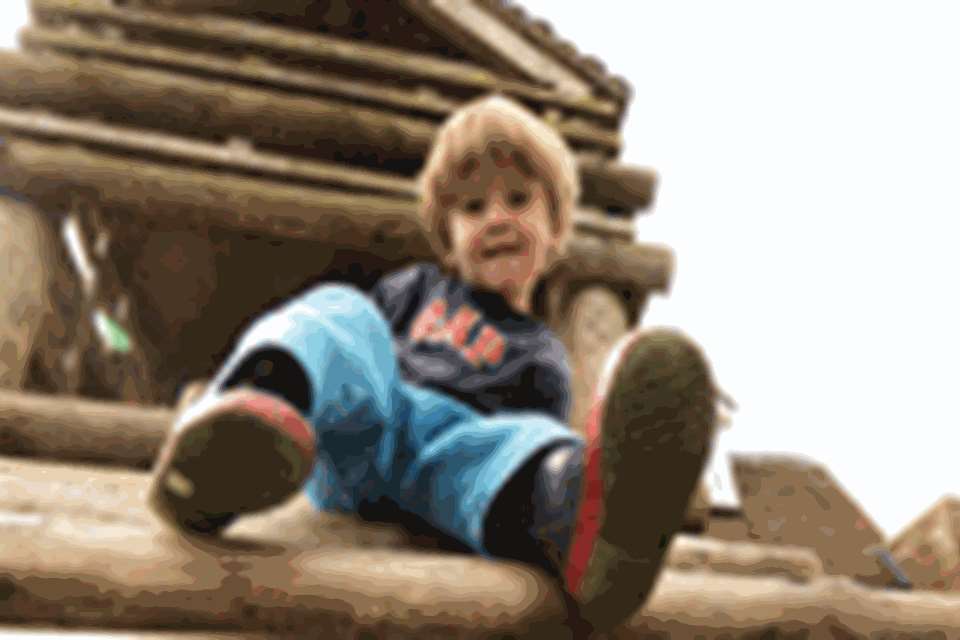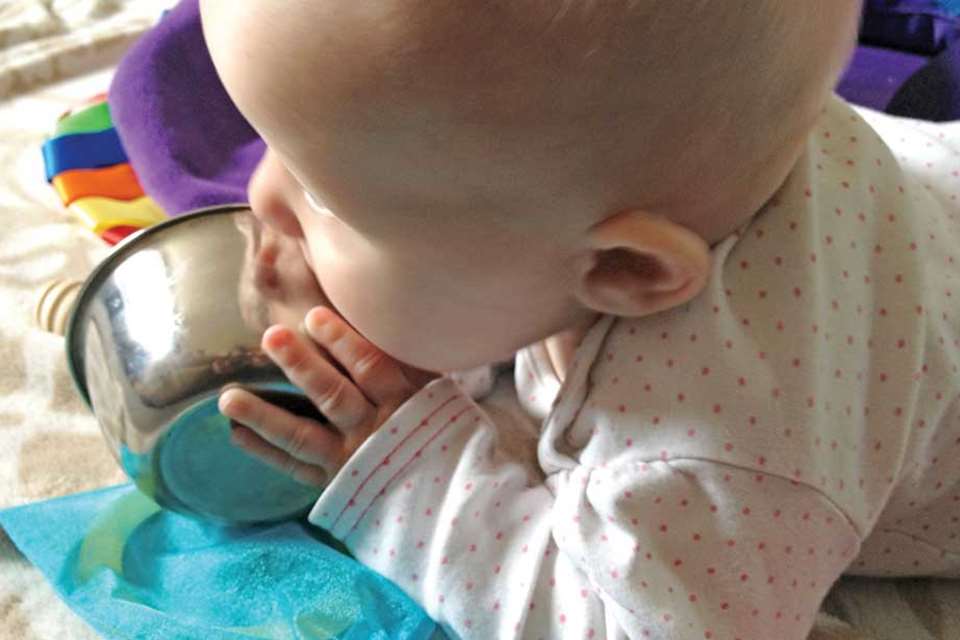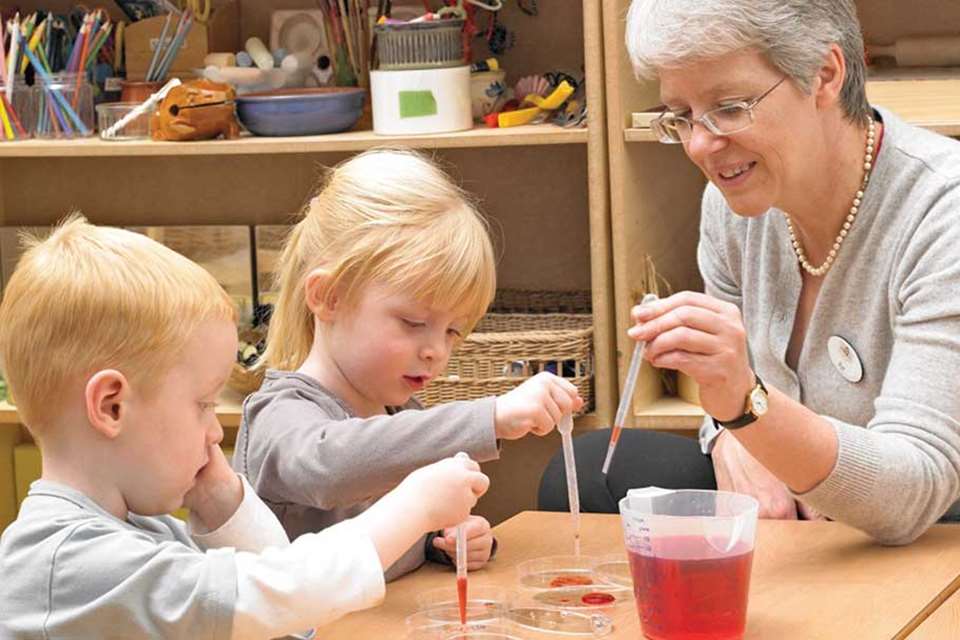Learning & Development: Physical Development - All fine by us!
Helen Chilton
Monday, October 6, 2014
Can daily sessions of focused physical activities help children develop the gross and fine motor skills they need to become confident writers? Helen Chilton reports on her school's progress.

The amount of time that children now spend playing on electronic gadgets is raising concerns about their fine motor skills, and ability to write. For children to master the skill of pencil control, they first need to be able to use their hands independently and to keep their body still while moving their hand - all skills that depend on a very young child developing core strength and stability.
Here at Littletown Junior, Infant and Nursery, West Yorkshire, most of our Foundation Stage children - according to our latest Ofsted report - are making 'outstanding progress', but throughout the school progress in writing is, Ofsted says, 'not as fast as in reading and mathematics'.
In response, and to give our children the best chance at succeeding in writing, we have developed a motor skills programme that has delivered significant benefits.
The need for children to have excellent fine motor skills from an early age is all the more pressing now that the National Curriculum expects children to write all letters (capital and lower case) from Year One and join their writing from Year Two.
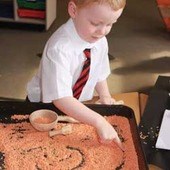 Our Early Years unit is a busy, chatter-filled, fun room with 51 children in nursery and reception, 61 per cent of whom are boys. Before developing the programme, we provided mark-making opportunities through our continuous provision and focus activities. The question was: what more could we do, for, as Diamond et al (2008) suggest, a high-quality writing environment, with a wide range of media and materials, cannot alone adequately support children's writing development.
Our Early Years unit is a busy, chatter-filled, fun room with 51 children in nursery and reception, 61 per cent of whom are boys. Before developing the programme, we provided mark-making opportunities through our continuous provision and focus activities. The question was: what more could we do, for, as Diamond et al (2008) suggest, a high-quality writing environment, with a wide range of media and materials, cannot alone adequately support children's writing development.
While hunting for inspiration, we chanced upon Alistair Bryce-Clegg's blog (www.abcdoes.com). In it, he explains the need for children to have control of their movements through the shoulder, elbow, wrist and down to the fingers and sets out activities for developing this control. Schneck and Amundson (2009) agree that such activities will then support children's writing development.
Bryce-Clegg explains, 'I came up with the concept of Dough Gym 20 years ago as a frustrated reception teacher, with a group of boys who were struggling to write. I wanted an initiative that would get them engaged, develop their dexterity and give them a reason to write all at once and that is where Dough Gym was born. Initially an intervention for six boys it soon became a hugely popular part of my daily timetable for all children.'
To provide challenge and meet the diverse needs of all the children in his class, he went on to develop Funky Fingers to run alongside Dough Gym. His blog provides a range of dough recipes, some specifically designed to make fingers work harder.
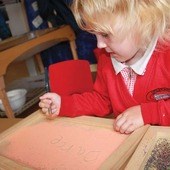
FINGERS AND FEET
We observed our nursery children playing with dough to see if they were working from their shoulder, elbow, wrist or finger and found that some were not yet ready for finemotor activities. So, we decided also to include gross motor aspects in our programme - and Fiddly Fingers, Fidgety Feet was born!
We observed, too, that the children who stood, rather than sat, to play with dough had to work harder, using downward pressure incorporating shoulder and elbow movements, rather than just wrist and finger actions. In response, we removed the chairs from the malleable area, which meant children began to use the space in a completely different way.
The programme is a 15-minute session of fine and gross motor activities, held at the start of each day. Fine motor activities include:
- cutting straight/wavy lines with a range of differentiated scissors
- weaving ribbons through colanders
- putting money in a money box
- tightening bolts on to nuts
- undoing padlocks with keys
- threading beads and tiny pasta on spaghetti
- mark-making with rubber brushes in fine sand to reveal pictures or small objects on the light box
- using tweezers to pick up objects, and
- fastening buttons.
For our gross motor activities, we incorporated some ideas from the school's movement group based on Dancing with Dyspraxia (Carr, 2008), including:
- balancing on beams and large gym balls
- jumping between cones and in and out of hoops
- weaving through wicker frames outside
- crawling through tunnels, and
- twirling ribbons.
The children are divided into five groups and supported by three adults who rotate around the groups as the children gain confidence in what they are doing. It is important that the activities are adult led, where possible, to ensure that they are done correctly and the pincer grip is being modelled where possible.
Although sessions last only 15 minutes, the programme is adult intensive and requires dedication. However, once we created specific drawers of resources, it became quicker and easier to organise. The resources are rotated around the groups over two or three weeks.
BENEFITS
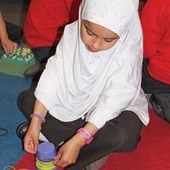 Children's writing has improved enormously, and so has their confidence in doing it. Moreover, not one child has said their hand is tired while writing. One nursery-age boy said, 'It's making my fingers strong', while a reception child said, 'It works because my writing is neat now'.
Children's writing has improved enormously, and so has their confidence in doing it. Moreover, not one child has said their hand is tired while writing. One nursery-age boy said, 'It's making my fingers strong', while a reception child said, 'It works because my writing is neat now'.
Many more children want to write within our continuous provision - so wonderful to see that we had to share it on our school blog. As well as improving their writing skills, the children have also developed their learning by making patterns with the pegs and the beads.
In terms of numbers, from the start to the end of reception year, the proportion of children:
- with a tripod grip rose from 68 per cent to 96 per cent
- with a dominant hand rose from 20 per cent to 100 per cent.
In terms of the EYFS, on entry, 36 per cent of our children were in 40-60 months for Moving and Handling, but this increased to 86 per cent achieving Expected or Exceeding at the end of reception.
In nursery, 27 per cent had tripod grip on entry with 31 per cent changing hand dominance, compared to 54 per cent at the end of the year using tripod and 96 per cent having a dominant hand.
Headteacher Fiona Cullivan-Ward is thrilled. 'This action is ensuring we enable all our pupils to have the best possible start in their journey to become skilful writers,' she says.
BY EXAMPLE
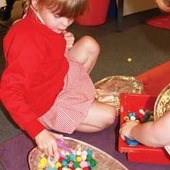 Some local schools have followed our example and adopted the programme. Heckmondwike Primary was so excited by the impact it had in early years that it has extended the programme throughout KS1.
Some local schools have followed our example and adopted the programme. Heckmondwike Primary was so excited by the impact it had in early years that it has extended the programme throughout KS1.
Francesca Brant, Foundation Stage co-ordinator, says, 'We have seen our children's physical skills develop and their confidence grow. A focus on gross motor movements through daily exercises and activities has improved children's core and shoulder stability, bilateral co-ordination and hand-eye co-ordination.
'Daily finger exercises and focused fine motor activities have significantly boosted the fine motor skills, hand strength and dexterity of our children. Our children are now more eager to draw and write.
'We have held regular events for parents to pass on ideas for practising motor skills through art, sensory play and simple manipulative games within the home and have developed "finger fun" boxes to house our resources and activities within the setting.
'Getting provision for physical development right within your setting will support the quality of children's learning and development right across the curriculum.'
Another local school, Canterbury Nursery School, introduced the programme to all their nursery children in their initial morning activity sessions, calling it Ready to Write. They found that the immediate impact was that children were calmer coming straight in to a focused group time and that more parents brought children in on time as they realised they were missing out on learning.
Deputy head Jackie Bracewell says, 'As well as the expected benefits from strengthening shoulder, arm and hand muscles and increasing dexterity which led to a natural development of pencil control we found the programme has also directly supported the development of the Characteristics of Effective Learning such as concentration, focus, persistence and resilience as well as impacting on mathematical development, both Numbers and Shape, and Space and Measure. This has been clearly reflected in our end of year progress data.'
REFERENCES
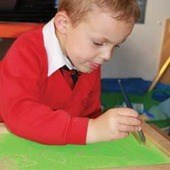 - H Carr (2008) Dancing with Dyspraxia: A Practical Guide for Parents and Teachers, Woodfield Publishing
- H Carr (2008) Dancing with Dyspraxia: A Practical Guide for Parents and Teachers, Woodfield Publishing
- K E Diamond, H K Gerde & D R Powell (2008) 'Development in early literacy skills during the pre-kindergarten year in Head Start: Relations between growth in children's writing and understanding of letters', Early Childhood Research Quarterly 23(4): 467-478
- C M Schneck & S J Amundson (2009) 'Pre-writing and Handwriting Skills' in J Case-Smith & J C O'Brien (eds), Occupational Therapy for Children (6th ed), pp555-580, Maryland Heights, MO: Mosby Elsevier.
Helen Chilton is a specialist leader of education and Early Years and Key Stage 1 co-ordinator, Littletown Junior, Infant and Nursery School, Liversedge, West Yorkshire; www.littletownschool.org.uk; early years blog, http://shareit.yhgfl.net/kirklees/littletown/eyfs/; Twitter account, @LittletownEYs




